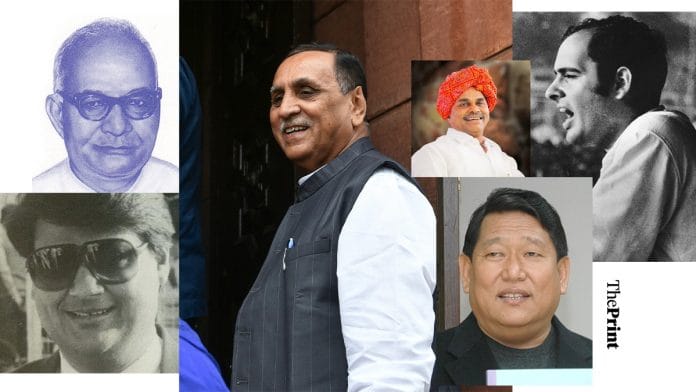New Delhi: BJP leader Vijay Rupani is the second Gujarat chief minister—serving or former—to die in an air tragedy, reviving memories of Balwantrai Mehta who was killed in 1965 when his plane was shot down by a Pakistani jet during the India-Pakistan war.
While Mehta’s death in 1965 became a footnote in history, India would go on to lose two more sitting chief ministers in helicopter crashes decades later—Y. S. Rajasekhara Reddy of Andhra Pradesh in 2009 and Dorjee Khandu of Arunachal Pradesh in 2011.
Reddy, the then chief minister of Andhra Pradesh, lost his life as the chopper carrying him, along with four others, went down in a forested area in the state. In a little less than two years, Khandu died as the helicopter carrying him and four others crashed in a heavily forested area of the border state.
India’s first Chief of Defence Staff (CDS) General Bipin Rawat became another high-profile casualty of a helicopter crash in 2021.
The memories of the episode involving Mehta, who was serving as the chief minister in 1965, were rekindled by a 2011 email from former Pakistani Air Force pilot Qais M. Hussain, who had shot down the Beechcraft aircraft carrying Mehta, to Farida Singh, the daughter of Jehnagir Engineer, the pilot on the Indian side. Hussain was flying an F-86 Sabre.
In the email, Hussain told Singh that he shot down the Indian aircraft—an eight-seat commuter aircraft—based on instruction from his radar controllers, who thought the plane carrying Mehta was on “a recce mission to open a new war front” in the Rann of Kutch. Mehta was carrying out an aerial survey of the border areas when tragedy struck.
“Instead of firing at him at first sight, I relayed to my controller that I had intercepted an eight seat transport aircraft (guessing by the four side windows) and wanted further instructions to deal with it. At the same time, I was hoping that I would be called back without firing a shot. There was a lapse of 3 to 4 long minutes before I was given clear orders to shoot the aircraft.
“After the shooting, I had a sense of achievement and satisfaction that I had completed my mission and destroyed any recce data that might have been collected to open a new war front. I landed back at Mauripur, Karachi with my fuel tanks bone dry and was greeted by my seniors and other squadron colleagues. Later that evening, All India Radio announced the names of the occupants who had lost their lives in that aircraft,” Hussain wrote 46 years after the incident.
Days later, the daughter responded to Hussain, saying the family “never, not for one moment, bore bitterness or hatred for the person who actually pulled the trigger and caused my father’s death.The fact that this all happened in the confusion of a tragic war was never lost to us. We are all pawns in this terrible game of War and Peace.”
Air tragedies claimed the lives of many other Indian politicians over the decades. Sanjay Gandhi, the elder son of former prime minister Indira Gandhi, died in a crash in 1980 near Delhi’s Safdarjung Airport while attempting to perform an aerobatics manoeuvre on board a two-seater plane.
In May 1973, Surendra Mohan Kumaramangalam, who was Indira Gandhi’s steel and mines minister, died when an Indian Airlines flight crashed near New Delhi. According to a report in The Evening Independent, his body was identified through a pen and a hearing aid. Tragically, his grandson was on board MH370, the Malaysia Airlines aircraft that disappeared in March 2014 en route to Beijing, and was never found.
In 2001, Congress leader Madhavrao Scindia was among the seven killed in a chartered plane crash, 85 km from Agra. The aircraft, a 10-seater Cessna, had taken off from Delhi’s Indira Gandhi International Airport. In 2002, then Lok Sabha Speaker G.M.C Balayogi died in a helicopter crash in Andhra Pradesh.
Other political leaders to perish in air tragedies include Haryana industrialist-politician Om Prakash Jindal and Haryana Vikas Party leader Surender Singh (2005). In fact, both were flying in the same helicopter that crashed near Saharanpur in Uttar Pradesh.
(Edited by Tony Rai)






